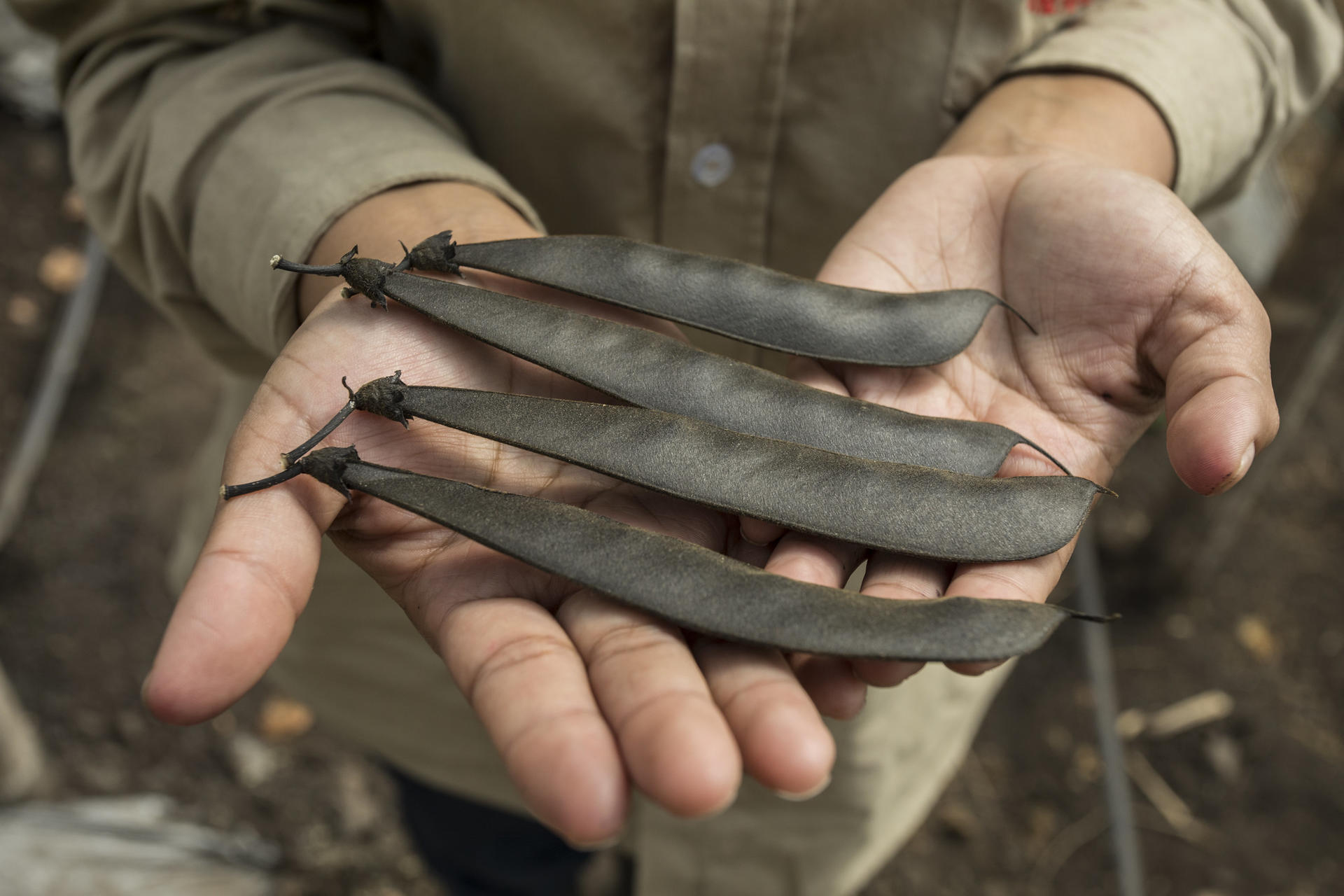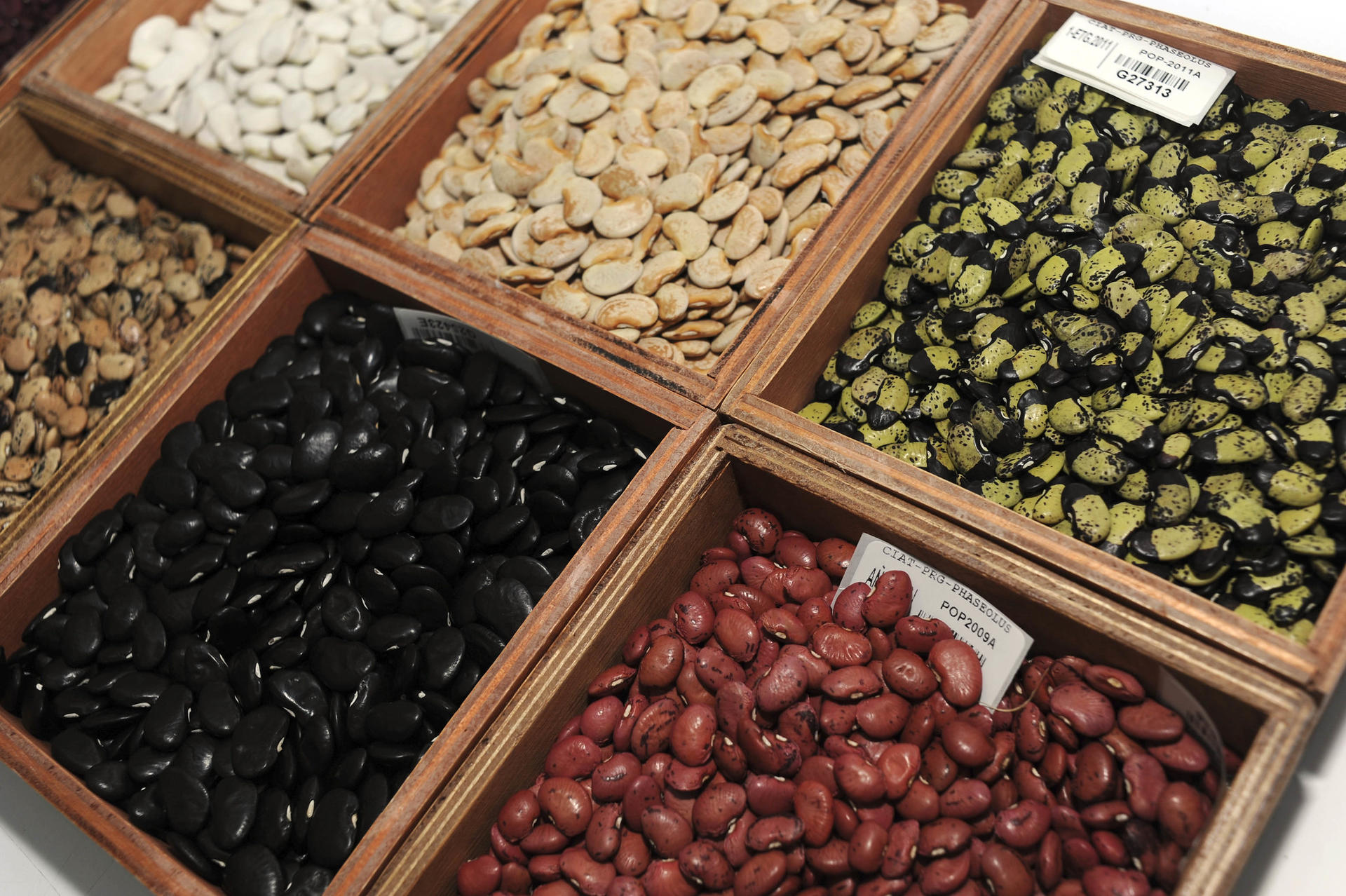Bean crop research approach

The Bean program is a part of the Alliance of Bioversity International and CIAT, and it functions within the CGIAR consortium of international research centers, playing a vital role in the approach we take on bean crop research.
The Alliance maintains collaboration with national research institutions in Latin America and Africa and facilitates the Pan Africa Bean Research Alliance (PABRA), a network of more than 650 partners across 31 countries. With our partners, the Alliance develops improved beans that show resilience under harsh growing conditions that are worsening because of climate change.
The Alliance is responsible for leading research on common beans (Phaseolus vulgaris), to enhance productivity, resilience, sustainability, utilization, and nutritional impact of beans throughout the tropics. The Alliance preserves the world’s largest and most diverse collection of beans which contributes to work on genetic improvement. In the Bean Program’s research agenda, developing resistance to biotic constraints has received attention since the start of the program, and in 1994 the program participated in the first efforts at biofortification to enhance the concentration of iron in grain, as a contribution to human nutrition and health. Breeding for drought tolerance has resulted in several released varieties in Latin America and Africa, and more recently tolerance to high temperatures complements our portfolio for climate resilient beans.

Trial of drought tolerant beans at the Alliance's headquarters in Colombia.
©Alliance/NeilPalmer
For farmers to achieve the most from their new bean varieties PABRA has identified leverage points by which bean varieties can be moved at high volumes, across geographic zones, and with wide social reach. As a result, more than 19.5 million farming households accessed quality seed of improved and preferred varieties. Also, farmers need to know how best to manage their crops with the best techniques to increase productivity and thus their profits. To this end an Integrated Crop Management (ICM) approach involving improved soil health and integrated pest and disease management, combined with new stress tolerant, high yielding bean varieties, has helped thousands of farmers increase their yields by up to 200% and to date, close to six million farmers (68% of them women) are aware of and use ICM technologies to improve their bean production.
However, most farmers often struggle to sell their products, and many are not linked to markets for a variety of reasons, such as remoteness, low production, low farm-gate prices, social norms like mobility, poorly organized markets, and lack of information and marketing know-how. That is why we developed a Bean Corridor approach across Africa to ensure that new varieties meet market requirements and that farmers are linked to markets actors. Like all trade, bean markets are driven by forces of supply and demand, and farmers can’t sell their produce if they don’t know what buyers want, or if buyers don't know or don't want what they have. PABRA strategies are designed tackle these obstacles that prevent bean farmers from selling their products at the best possible price, and targeting multiple markets which serve a diverse range of consumers including urban and peri-urban, as well as rural.

Bean market in Kampala, Uganda.
©Alliance/NeilPalmer
How we do it
Having the world’s largest collection of landraces at the Alliance campus in Cali, Colombia gives us access to the full range of genetic diversity of common bean. Another special resource is a sizable crew of experienced field workers who can create hundreds of crosses every year, to recombine genes in novel and useful combinations.
Whether in Colombia or in Africa, primary research sites are close to a range of environments what permit selecting for resistance to different diseases, or tolerance to abiotic stresses.
In recent years we have expanded the use of interspecific crosses with tepary bean (Phaseolus acutifolius) and other relatives that evolved in arid agro-ecologies, and that have genes with great potential to address climate change.

Beans at the Alliance gene bank in Colombia, which sent its latest consignments of seeds for conservation at the Global Seed Vault in Svalbard, Norway.
©Alliance/NeilPalmer
